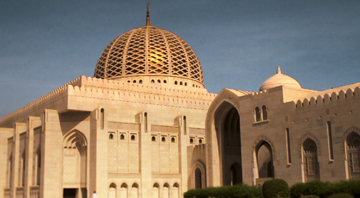

Oman’s strategic location has played a major role in many campaigns and regional conflicts in this region. Oman overlooks the Arabian Sea, the Sea of Oman and the Arabian Gulf. It also controls the Strait of Hormuz, which is one of the most important facilities in the region, linking the Sea of Oman with the Arabian Gulf. The Strait of Hormuz is a gateway to all ships coming from the Indian Ocean and Arabian Sea.
Al Wattih in Muscat Governorate is one of the first inhabited cities. Modern archaeological discoveries suggest that humans settled in it during the Stone Age, i.e. more than 10,000 years ago. The Babylonians and the Assyrians settled in Oman because they wanted to control the trade route that linked Asia to the shores of the Mediterranean Sea.
Like the diversity of the environments and terrains in Oman, Omani people’s features differ as well. The desert dwellers’ features are different from those of mountain dwellers, and the features of the urban population are different from those residents of remote villages who depend on agriculture and livestock for their livelihood.
In general, Omani features are characterised by a broad smile and the authentic Arabic generosity that is in the Omani blood. This is evident in the Omani hospitality widespread throughout the country, whether be it the aromatic Omani coffee offered to visitors or the laden palm trees that welcome anyone who wishes to taste their fruit.
Khasab Fort: With its command of the bay sadly diminished since Lulu's was built on reclaimed land, Khasab Fort nonetheless cuts quite a dash with its four stone turrets and fine set of crenulations. Built by the Portuguese in the 17th century around a much older circular tower, this well-preserved fort now houses one of the best little ethnographic museums in Oman.
Sultan’s Palace: If you stand by the harbour wall on Mirani St, the building to the right with the delightful mushroom pillars in blue and gold is the Sultan’s Palace. Built over the site of the former British embassy, there used to be the stump of a flagpole in the grounds: the story goes that any slave (Oman was infamous for its slave trade from East Africa) who touched the flagpole was granted freedom. On the inland side, an avenue of palm trees leads to a roundabout surrounded by grand royal court buildings and the yet-to-open national museum.
Al Jabal Al Akhdhar: This rises to a height of 2,980 metres and is famous for its wide plateau close to the summit. The journey from Muscat to Al Jabal Al Akhdar takes about two hours and can only be undertaken by four-wheel drive.
As Saleel Nature Park: The Park is located in wilayat AL Kamil W'al Wafi in Al Sharqiyah South Governorate, and lies 57 kilometres from wilayat of Sur. It extends over an area of 220 square kilometres, and is predominantly covered by forests of acacia trees.
Al Bustan Beach: Al Bustan beach and overlooks the mountains that intertwine with the hotel’s sands and beaches.
Mutrah Corniche: This is near one of the most important ports in Oman, Port Sultan Qaboos in the heart of the capital Muscat.
Al Fahal Island: This limestone was originally part of the sea floor. It is made up from the shells of marine organisms such as bivalve shellfish, coral and algae, deposited in a shallow marine environment.
Al Khayran: Al Khayran is an area of great geological and biological diversity. It features drowned river valleys creating islands and fjord like coastline, several types of rock formations, extensive mangrove woodland, intertidal mudflats, saltmarsh and sabkha (salt flats).

Climate:
The most popular time to visit is from October to April when the weather is warm and sunny and temperatures range from a very pleasant 25°C (77°F) to around 35°C (95°F) during the day. It is cooler at night, ranging in temperature from 17°C (63°F) to 19°C (66°F).
Language:
Arabic is the official language of Oman. Other languages in Oman are English, Urdu, and other Indian dialects spoken by Indian immigrants and tourists.
Currency:
The currency of Oman is rial. Its ISO 4217 code is OMR. One rial is divided into 1000 baisa.
Clothing:
You should wear appropriate clothing. For women this means to cover their knees, shoulders and cleavage and when visiting mosques also to cover their hair and ankles. Men should actually consider the same, except covering the hair. It happend to a friend who was wearing normal (even covering the knees) shorts when we wanted to enter Muscat Festival that security refused to let him in like this (carrying a Sarong in your bag can be very helpful in such situations).